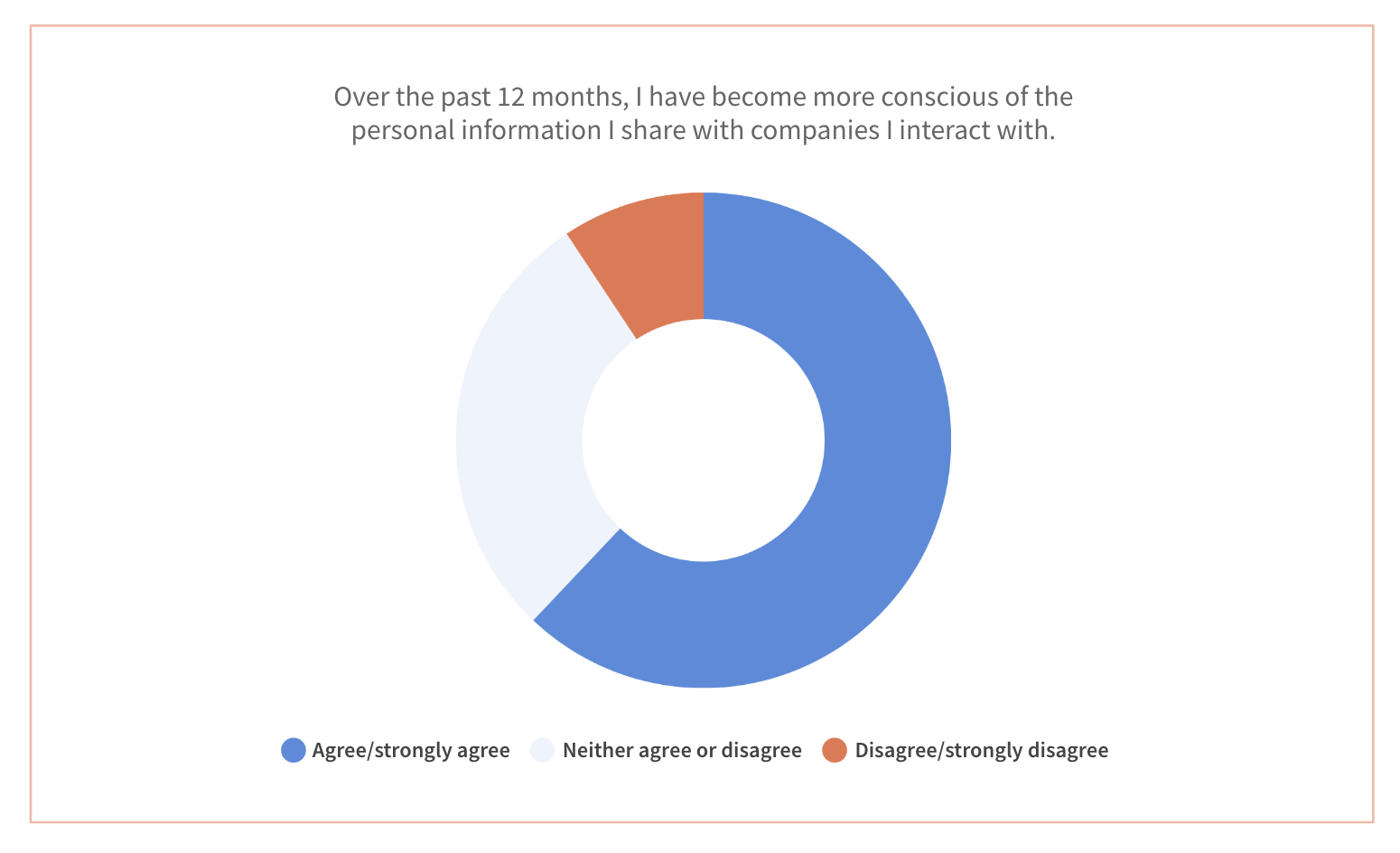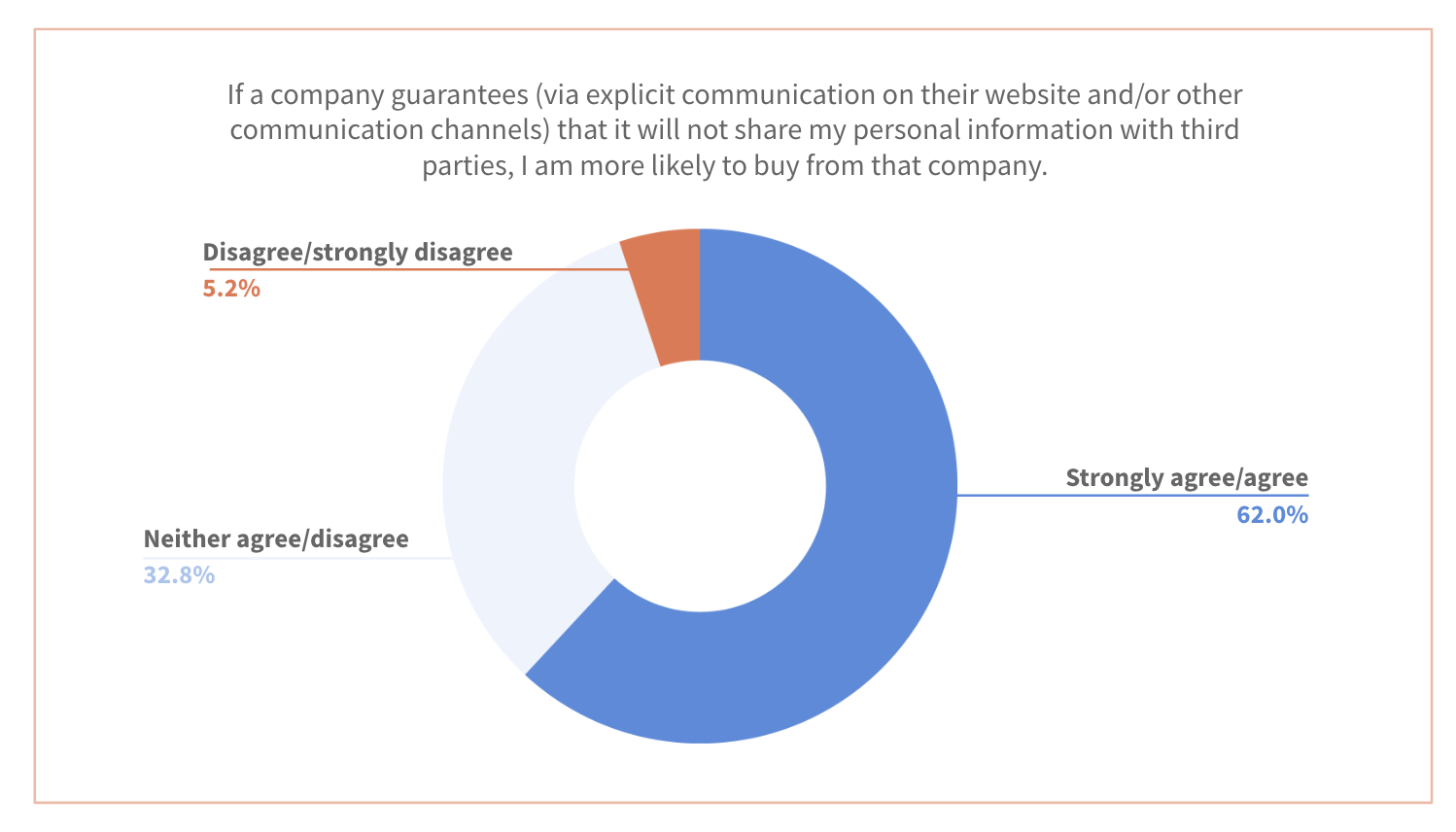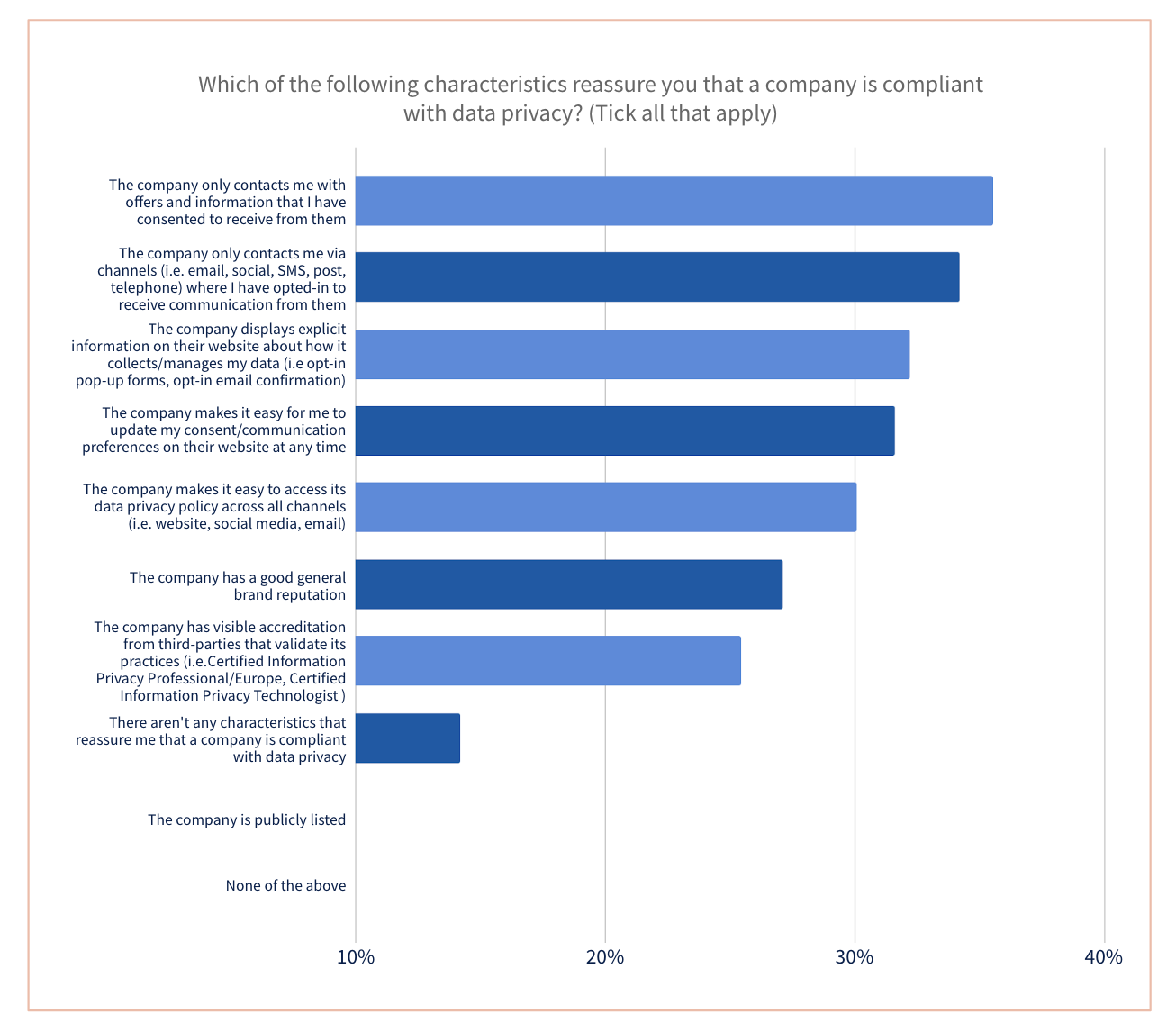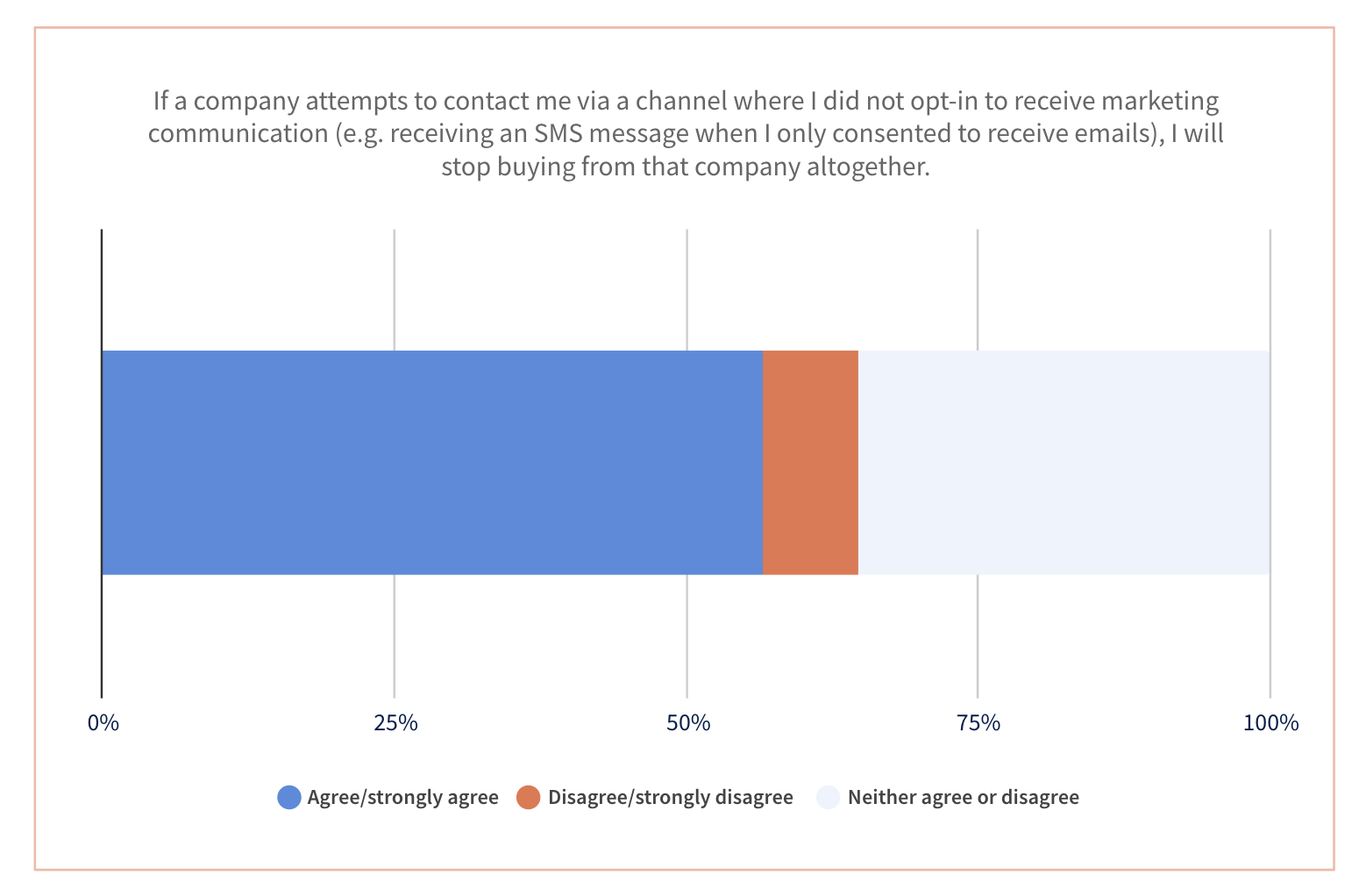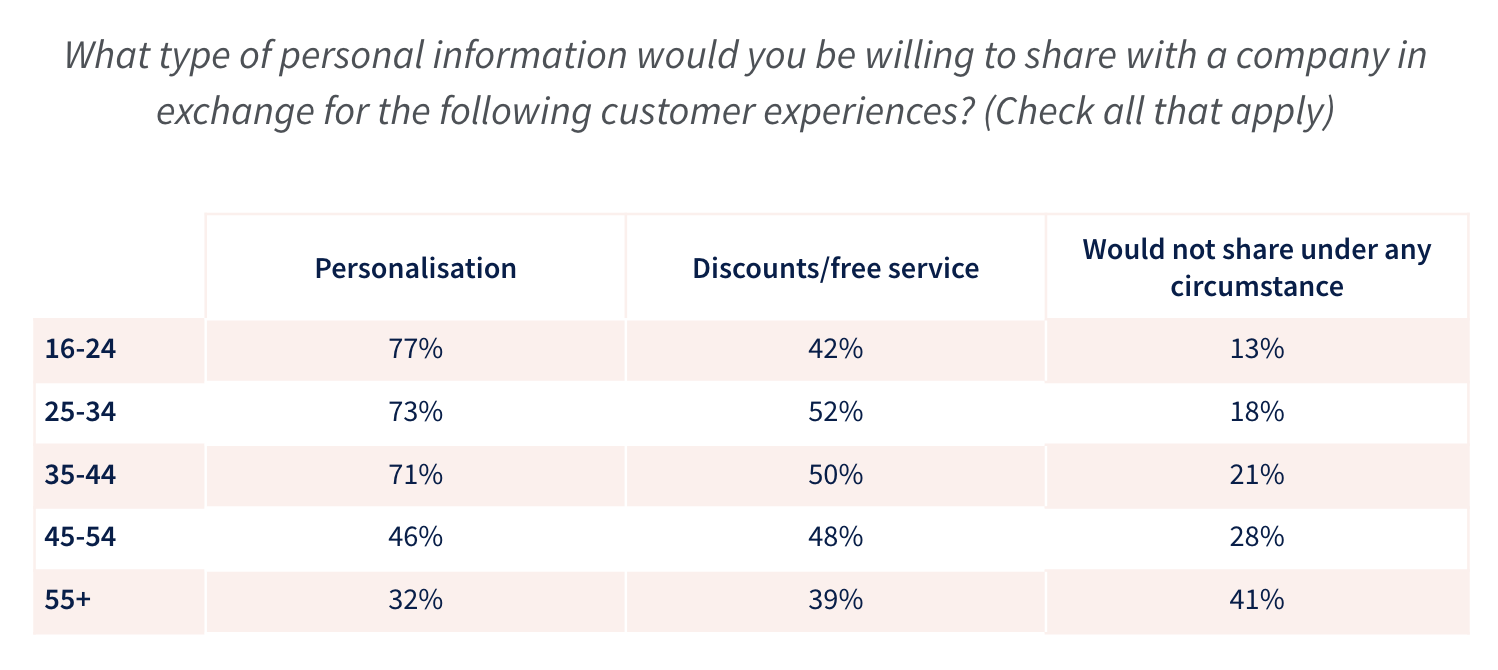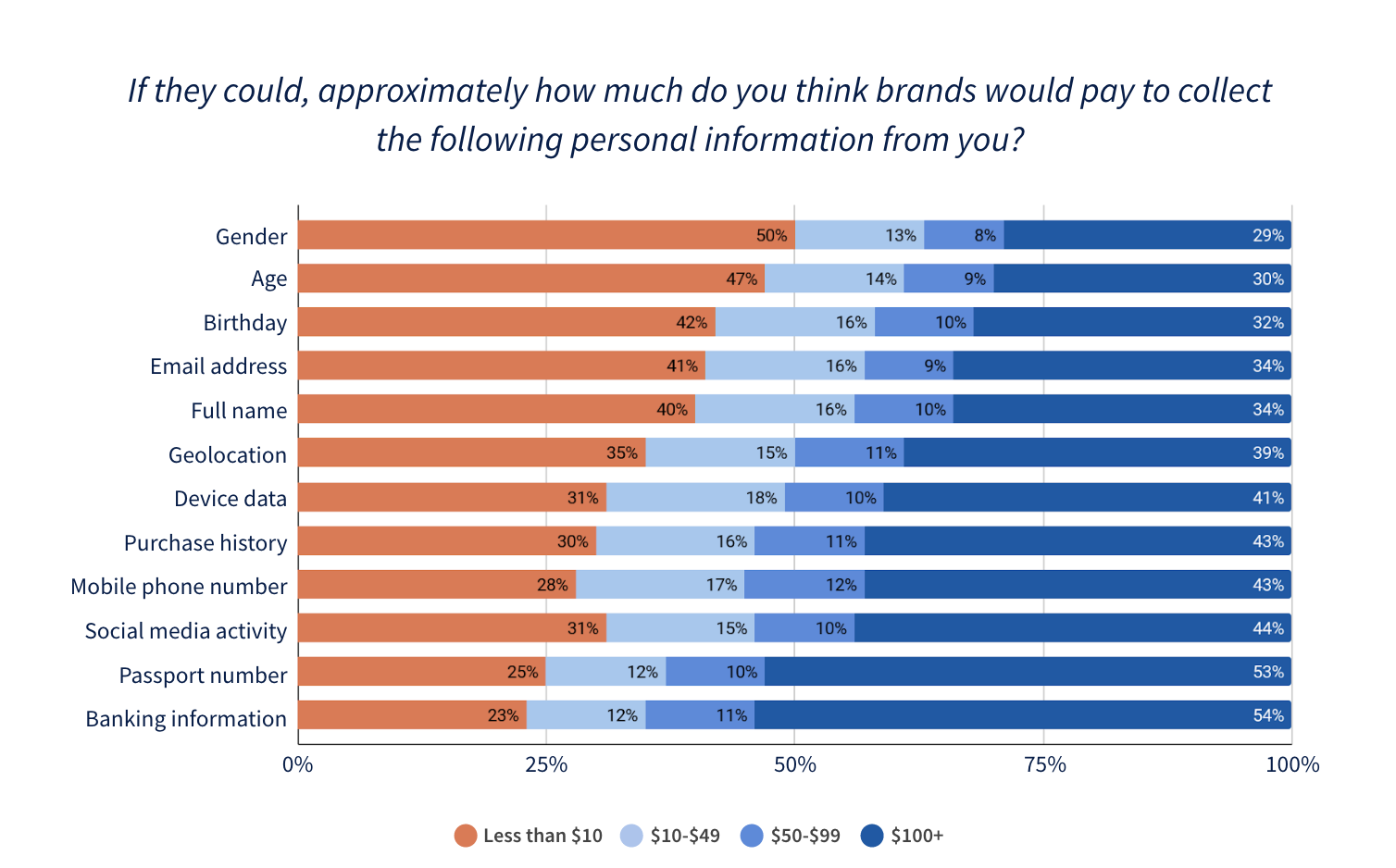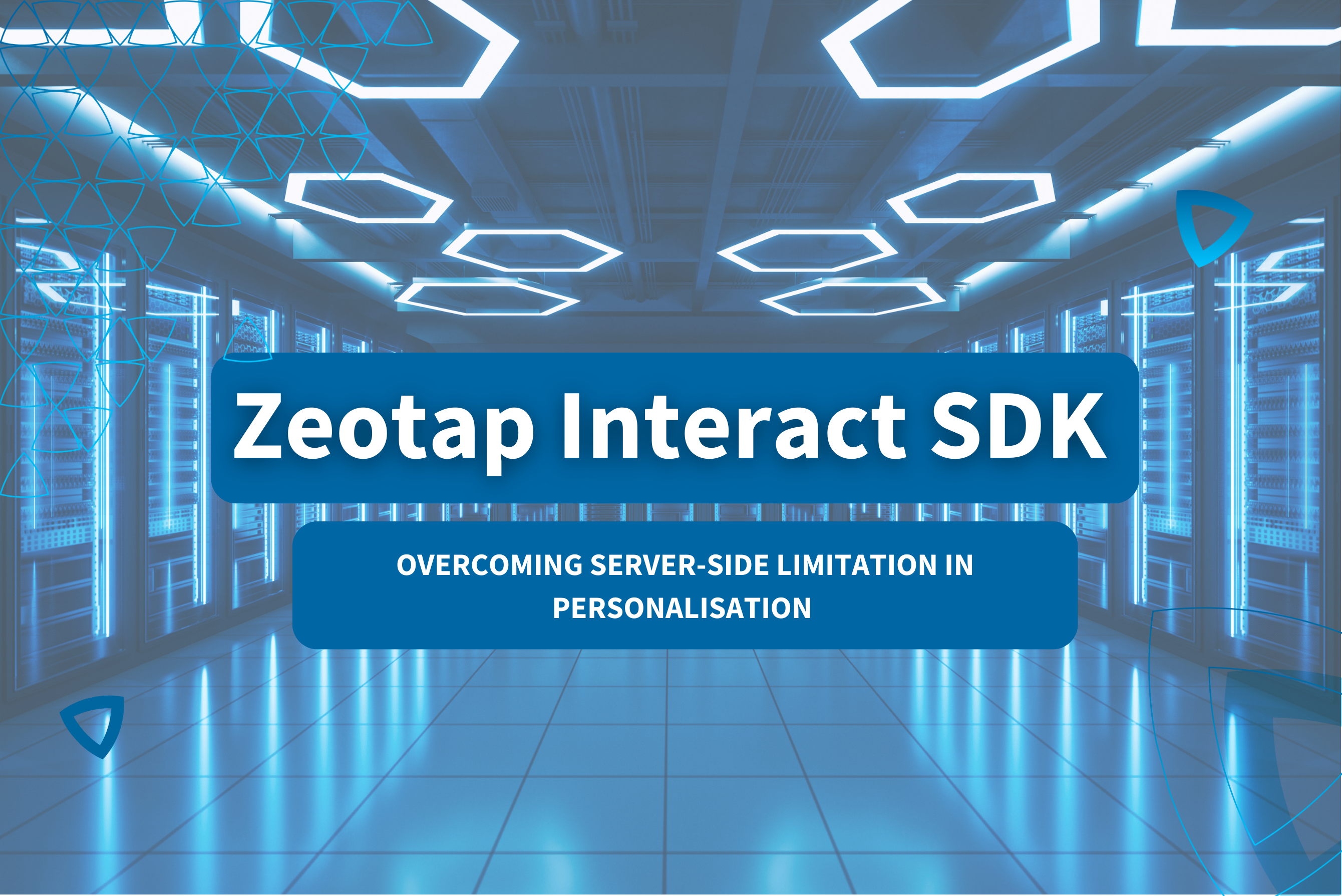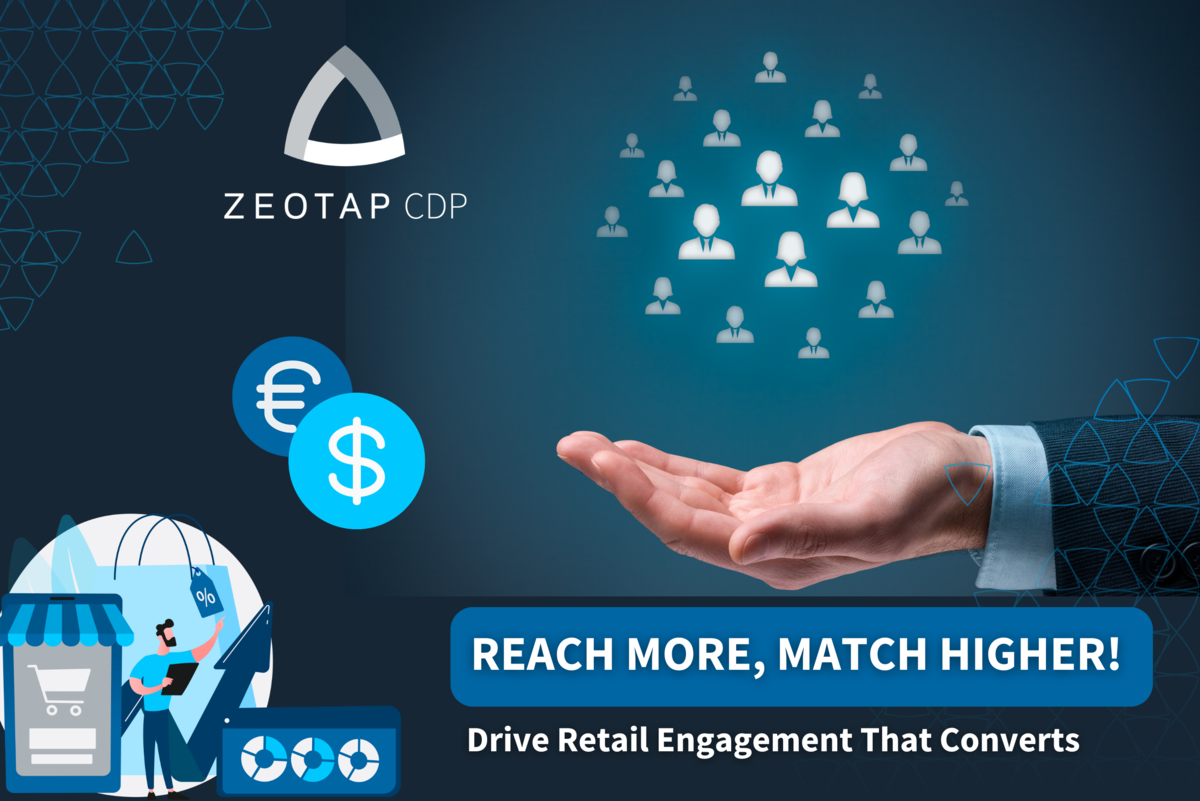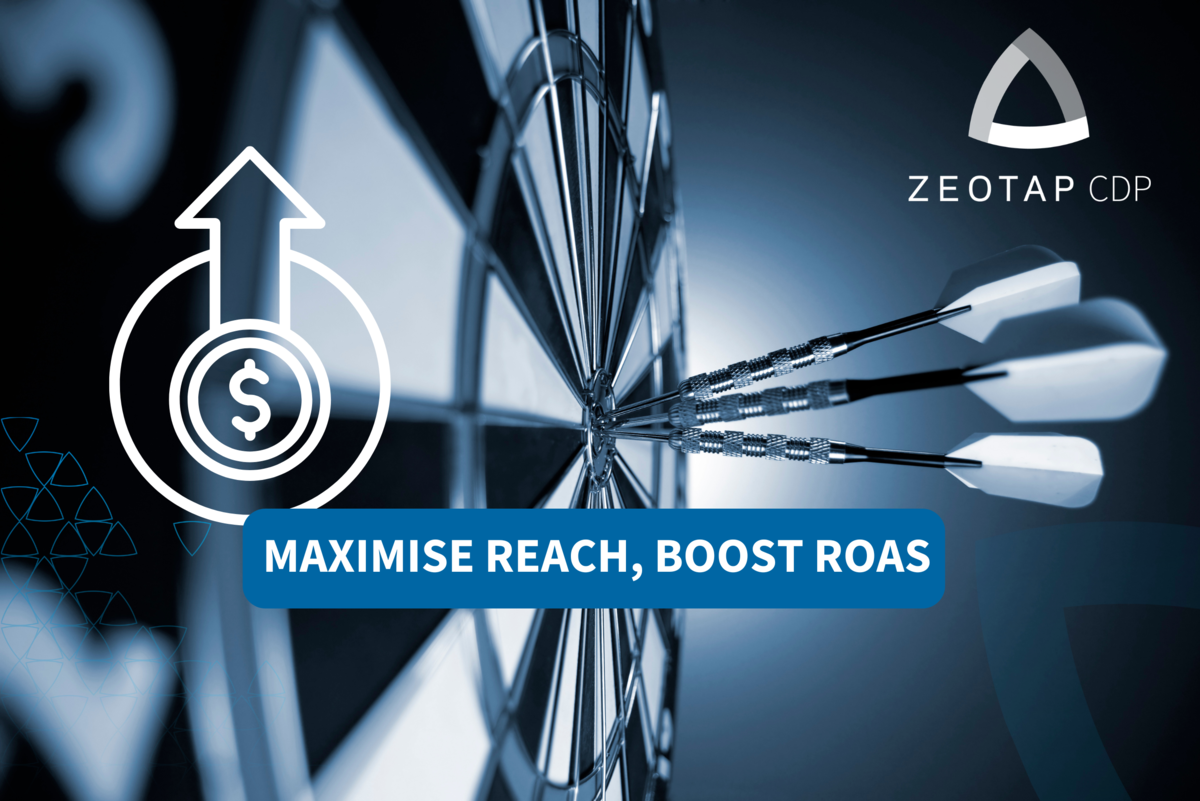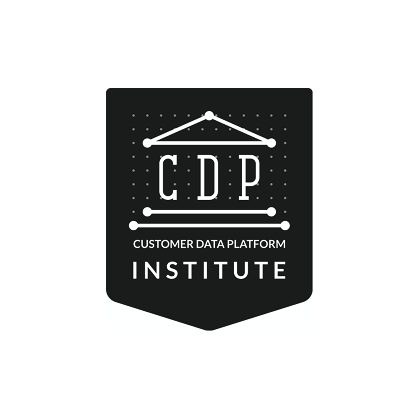Today’s consumers have a greater understanding than ever of how their data is collected and used, such that many now evaluate a company’s reputation on data privacy in the same way that they would aspects like product quality or overall customer experience.
For businesses, this paradigm shift is crucial. The role of customer data protection in the purchase decision process means that data security is now a measurable lever for increasing revenue. At the same time, data security done poorly will result in significant revenue losses.
But just how much can a business’s approach to data privacy impact its bottom line?
To find out, Zeotap commissioned a survey of 3,000 consumers through online survey company Censuswide in December 2021. Respondents were asked a series of questions related to how they feel about the data privacy principles followed by businesses with whom they interact, how those impressions inform their spending choices, and what actions these firms must undertake to earn their confidence and trust.
Read on for an overview of some of our findings:
The Reality of Customer Data Protection
After 4 years of GDPR vowing to enforce better transparency and accountability in data processes, exactly where is the disconnect between marketers and regulations? To find out, we needed to ask two questions:
- Are marketers actually practising what they preach when it comes to data privacy? And;
- Are regulators doing their part to make GDPR the “overall success” they’ve claimed it to be?
The disappointing truth about consumer confidence in data privacy
From a consumer perspective, the answer to both questions is an unfortunate and resounding: no.
When we asked respondents whether they felt in control over how their personal information was being used by businesses they interacted with, 60% were either in disagreement or on the fence.
This is particularly alarming when compared to the marketers’ view of where things are today: just last year, 91% of marketing executives were confident in their data privacy policies.
And when we asked consumers whether they’d experienced a company continuing to contact them after opting-out of communications, it got worse: a majority of consumers attested that they had.
The critical thing to remember here is that it’s the consumer making this assessment. Many in the sector have criticised regulators for taking a light touch with GDPR penalties thus far, but these findings indicate that customers are already holding companies accountable – and, we saw first-hand how the percentage of consumer spending influences those exact penalties.
What’s going wrong with data privacy?
Despite time and effort, poor consumer confidence levels in how their data is handled suggest even after four years there’s still a long way to go. But what exactly has been going wrong?
While there are clearly many factors to consider, there is one resounding hypothesis: many businesses allow for the consent (and retraction) to data usage at multiple user touch points (i.e., email and account creation), which then results in consent preferences being kept in different silos – providing an overall incorrect picture of the customer’s preferences. This would also explain communications still being sent even after consumers have opted out because consent choices are not up-to-date in a universal customer profile.
This universal, continually updated customer profile is a key requirement to consider for a business that wants to become privacy-compliant and win the trust and confidence of its consumers. Being able to unify data and consent into one repeatedly updated asset provides businesses with a powerful “golden record” that stays compliant with ever-changing regulations, and that wins over consumers.
How Companies Can Create a Fair Data Value Exchange
The resulting insights were indexed against different key stages of the consumer purchase funnel:
Privacy as a Purchase Driver
The current state of consumer trust in how their data is used paints a gloomy picture, but it also offers enormous potential for those businesses that take the initiative to get it right.
Reassure the cautious consumer
After the lack of confidence and trust highlighted in the above section, it’s no surprise that our research revealed 60% of consumers had become more conscious of the personal data they shared with companies in just the last year.
One potential reason behind this sense of caution is the (often mistaken) belief that their data is being sold: a notable 57% of consumers believe that companies they share their data with are selling it on.
So for brands, the learning is to be explicit about any promises not to do so: nearly two-thirds (62%) of respondents said they were more likely to buy from a company that guarantees it will not share their personal information with third parties:
Compliance leads to conversion
When consumers were asked which characteristics give them peace of mind that a business is privacy compliant, the majority responded that clear preferences centres and policies are useful, but the most essential thing is to only contact them with the information they’ve given consent to receive.
Privacy as a Retention Driver
Consumers have long been concerned about the privacy of their personal information, and research showed this hasn’t changed. Consumers continue to defend their stance on the relationship between privacy and loyalty, and they couldn’t be more clear: if the company makes a mistake in consent orchestration, they’ll walk away.
A shocking 57% of our respondents agreed that if they were contacted through a channel where they had not provided consent to be contacted, they would simply cut ties with the company.
And the percentages only grew when we asked whether they would cut ties with a company that contacted them on ANY channel after they had opted out of receiving further communication.
With costs for acquiring new clients continuously rising, these findings are of vital significance to revenue. Even the tiniest mistake in collecting consent may result in a client loss, making the case for laser-focus on consent orchestration an important revenue issue.
Where Privacy Meets Profit
As a marketer, gathering client information is a given – and we readily talk about the concept of “value exchange” while doing so (i.e. the incentives and benefits we give to customers in return for their data).
However, there’s another issue that hasn’t been addressed: how do those attempts to create a “value exchange” affect your profit margin? And are they really worth it?
The real price of consumer data
Our first step was to examine what a company must “give away” in order to acquire important pieces of consumer data. In exchange for services ranging from customised offers to discounts and free delivery, we asked respondents how willing they would be to share various types of personal information with a company.
The findings were surprising and signal good news for marketers. Consumers were actually more ready to share data in exchange for personalised experiences, rather than in exchange for discounts.
The fact that data does not have to come at the expense of discounts or freebies should be a welcome discovery for businesses looking to preserve their margins while developing a first-party data asset.
Nuances in age demographics also show that the desire for personalisation spans across most age groups. However, the older the consumer, the more sceptical they are to share personal data under any circumstance:
The lesson? While customers desire personalisation and anonymity, there’s a point where the promise of a discount or personalised message—which varies depending on the type of consumer and type of business— just won’t be enough.
The price consumers put on their data
There’s more to this lesson than just consumer hesitation about how their data will be used: consumers have become wiser to the value of their data to a company. In fact, when we asked consumers to price different types of personal data (i.e., the amount of money they think a brand would pay for a data point), their estimates were far higher than what other companies would pay in reality.
On average, 43% of our respondents believed that companies would pay over $50 for their email address whilst 55% believed their mobile phone number to be worth the same when in actuality, the price point is often a lot lower.
The lesson: data is a valuable commodity for both businesses and customers. When it comes to ROI, this means that gathering as much data as possible comes at an expense.
This is a significant note of caution for businesses that are attempting to build up first-party data assets ahead of the cookieless future. This exercise is expensive, so concentrate on gathering only what you need most.
The Rise of the ‘Good Marketer’
Our exclusive conversations with consumers have revealed that data privacy is now more than just a compliance issue. Brands interested in competing and succeeding must go above and beyond the “bare minimum” of checking boxes and instead, embrace their commitment to data privacy as part of their client experience.
However, this also provides the chance to be innovative and unique, and gives rise to a new breed of marketer who sees it as such. We refer to this new generation of marketers as the “good” marketers – those who see the needs and requirements of the consumer and the business as mutually reinforcing, and not in opposition.
When it comes to data, the ‘good’ marketer embraces data privacy rather than attempting to circumnavigate it, and concentrates less on obtaining a full view of the consumer, but more on getting the right view of the customer. This may appear to be a minor change, but it’s crucial – as a marketer, it compels you to question what data you’re collecting, how you’re managing it, and ultimately, what you’re using it for.
What’s next in customer data protection: download the full report for more in-depth results and key takeaways
In our full report, we give 4 actionable takeaways companies can implement off the back of our findings that intertwine the right tools and practices to meet the expectations of both consumers and regulators.
We focus on things like how to correctly critique the data companies are collecting, which auditing tools should be used to collect data and manage data management, how to get serious about data access, and how, and where, to display promises to data privacy.
We believe that these four principles allow both brand and consumer to continue to fight for the same objective: creating relevant experiences that respect data privacy, so beginning the era of the ‘good’ marketer: those who see data collection and data privacy as equally critical parts of a trustworthy customer journey, and will subsequently reap stronger conversion, retention and profit as a result.
